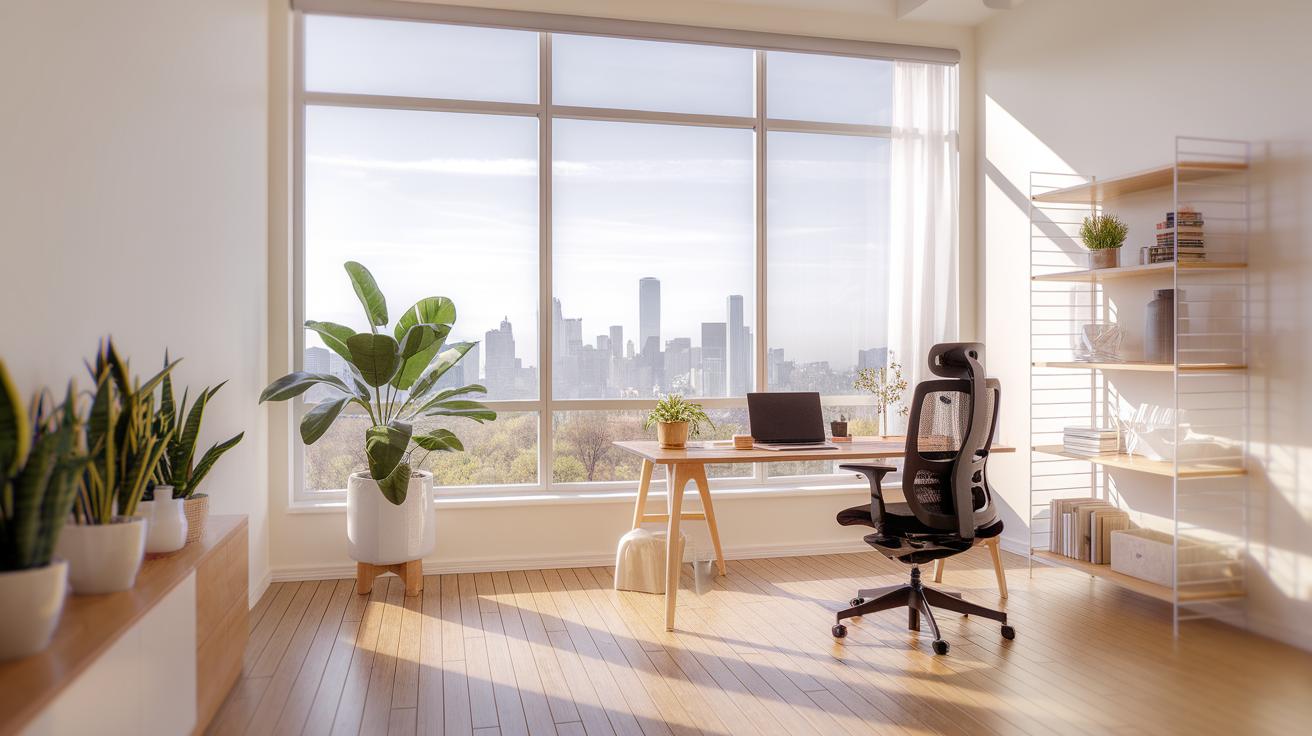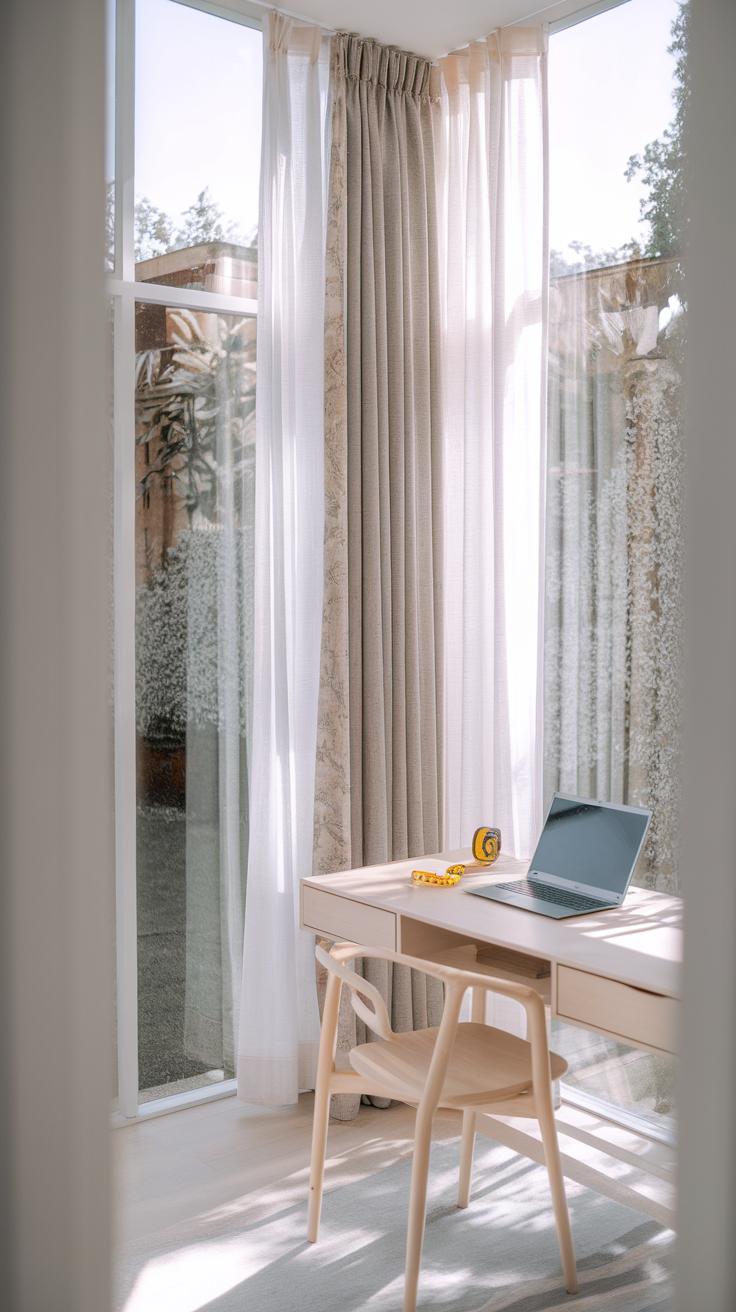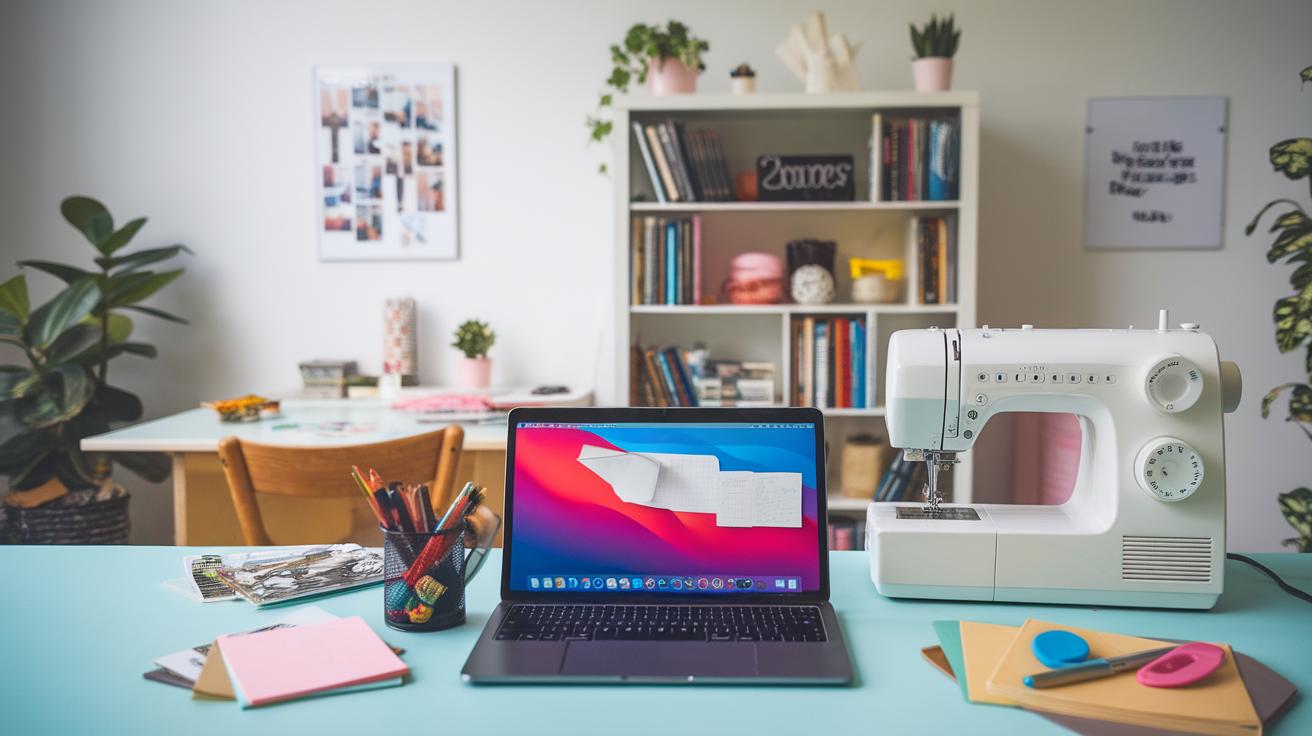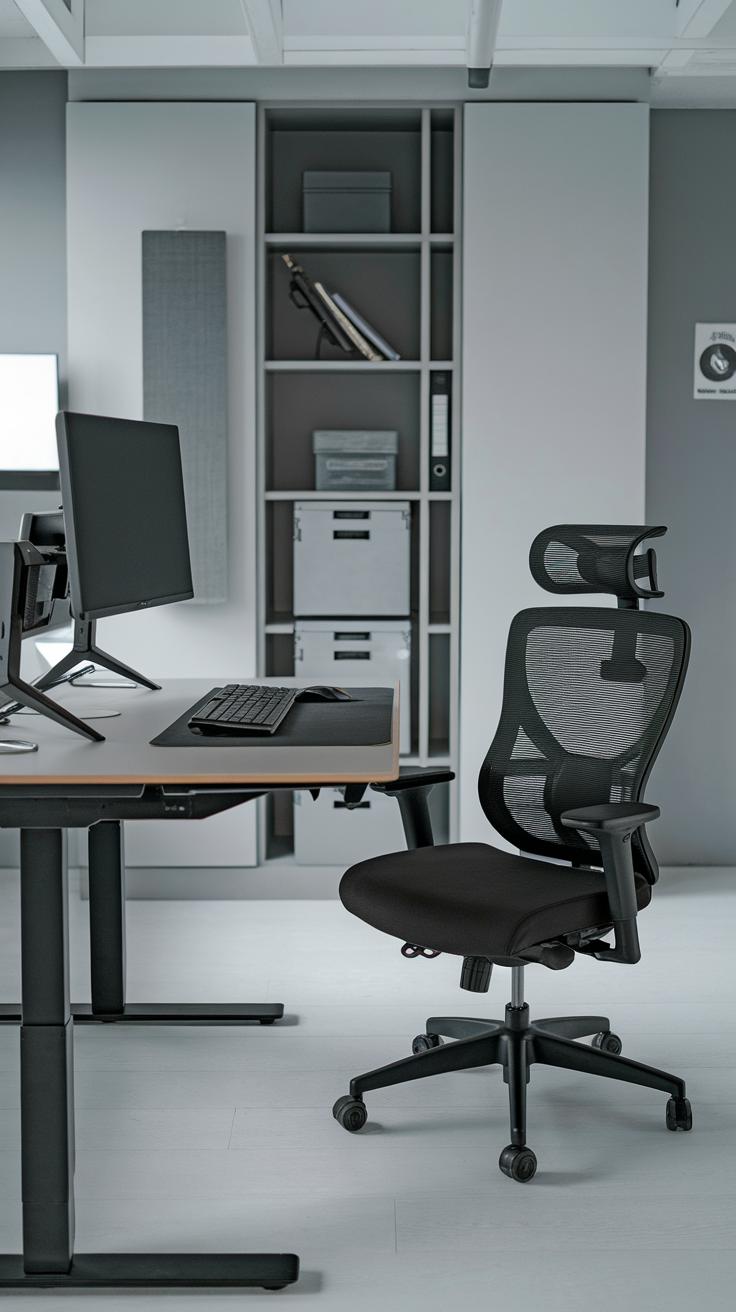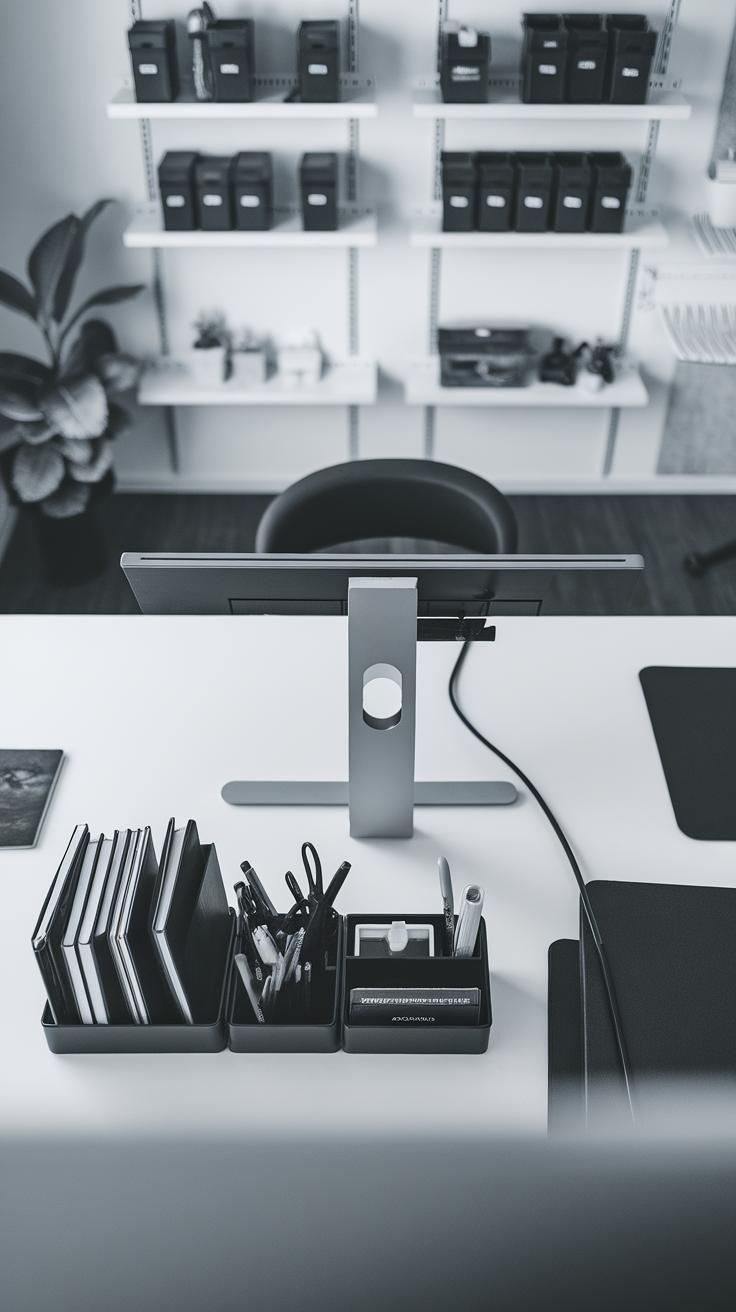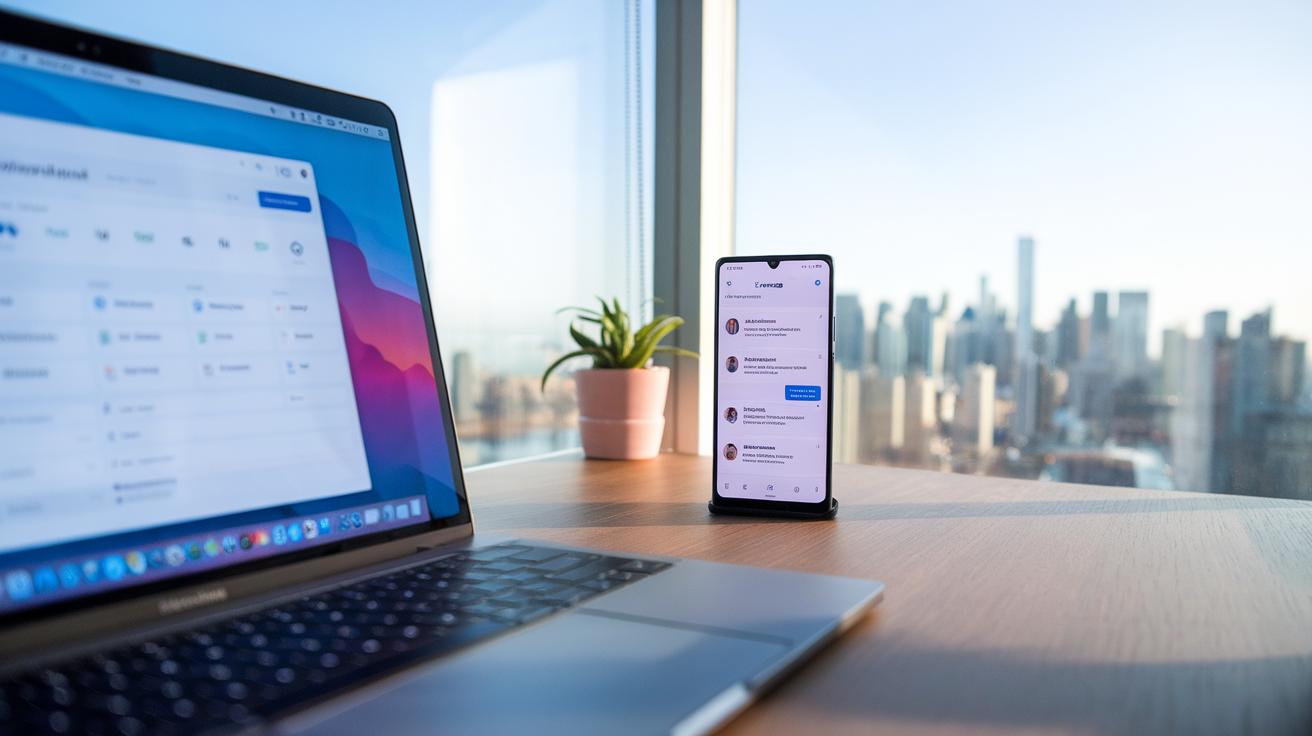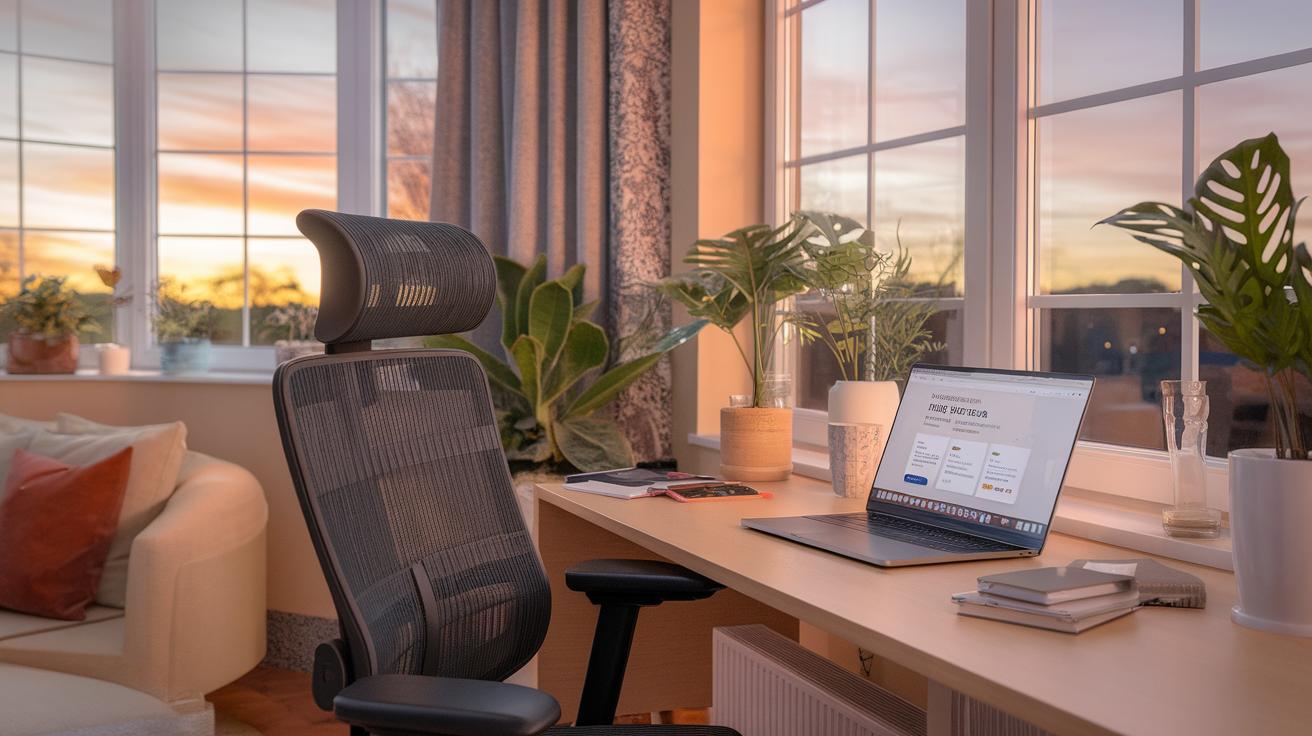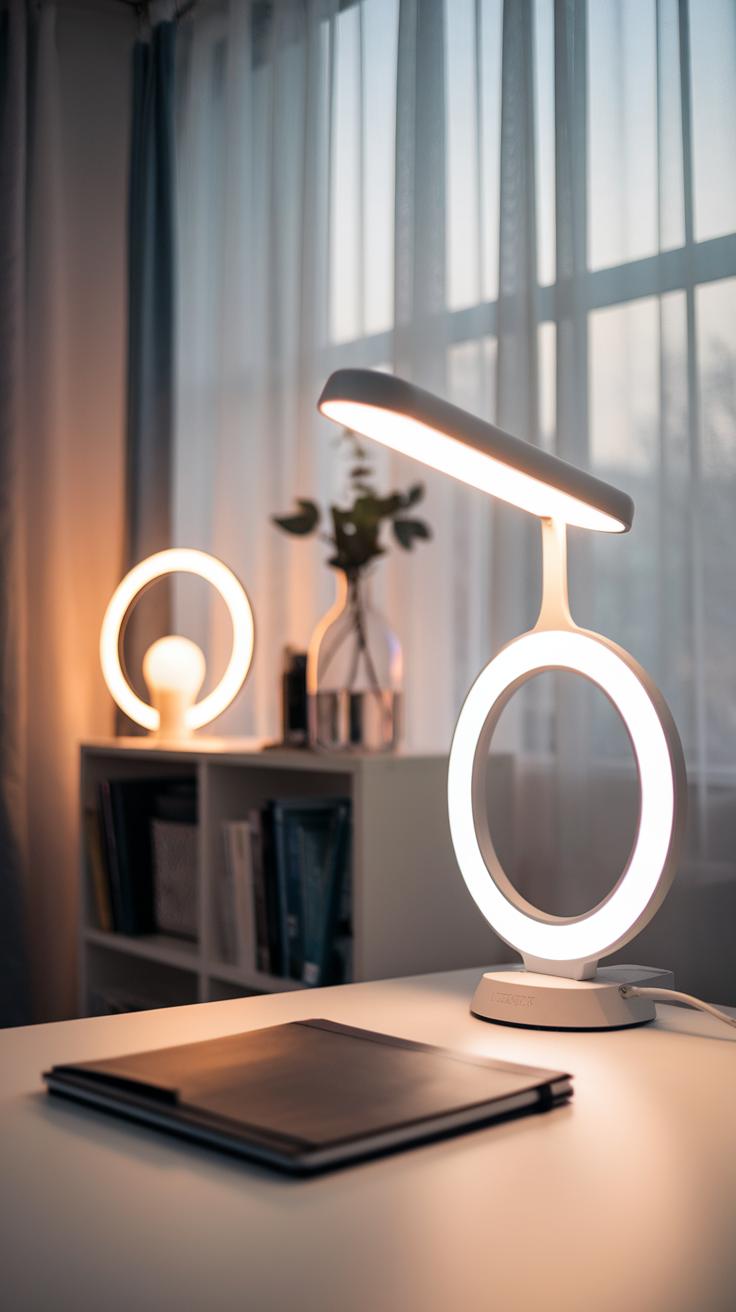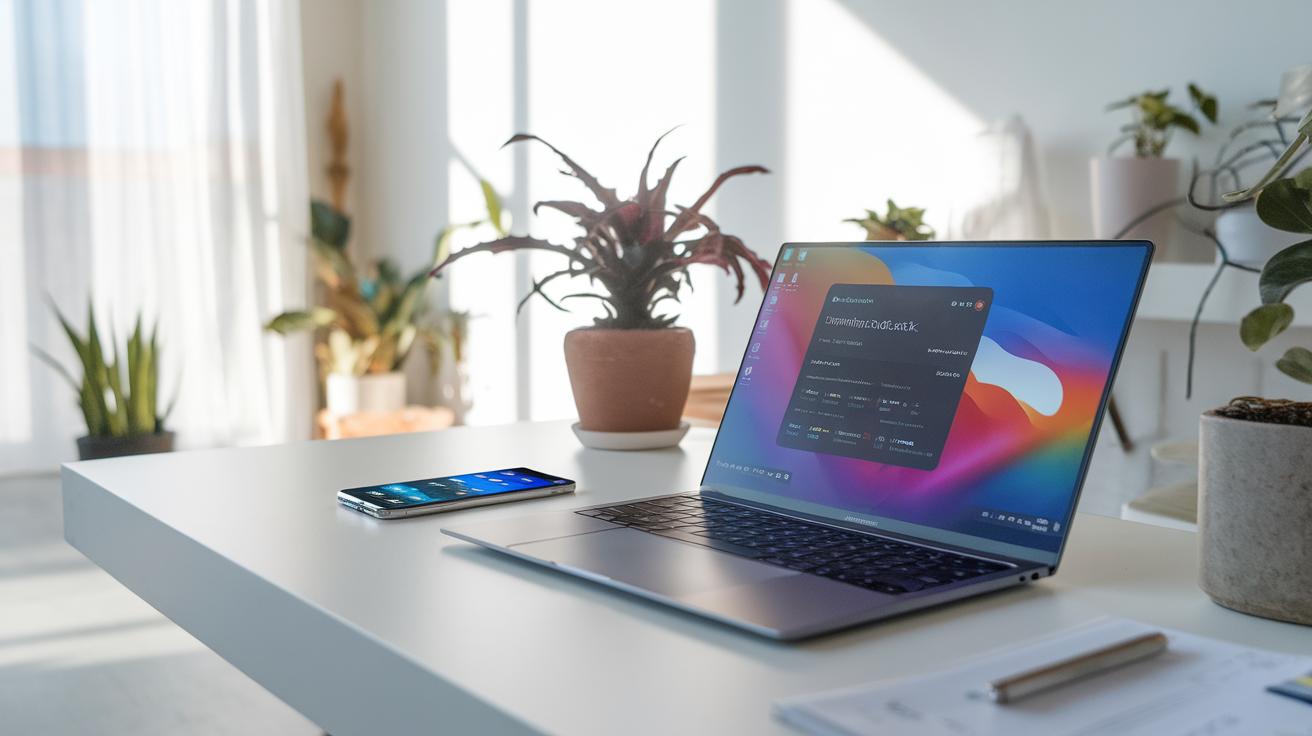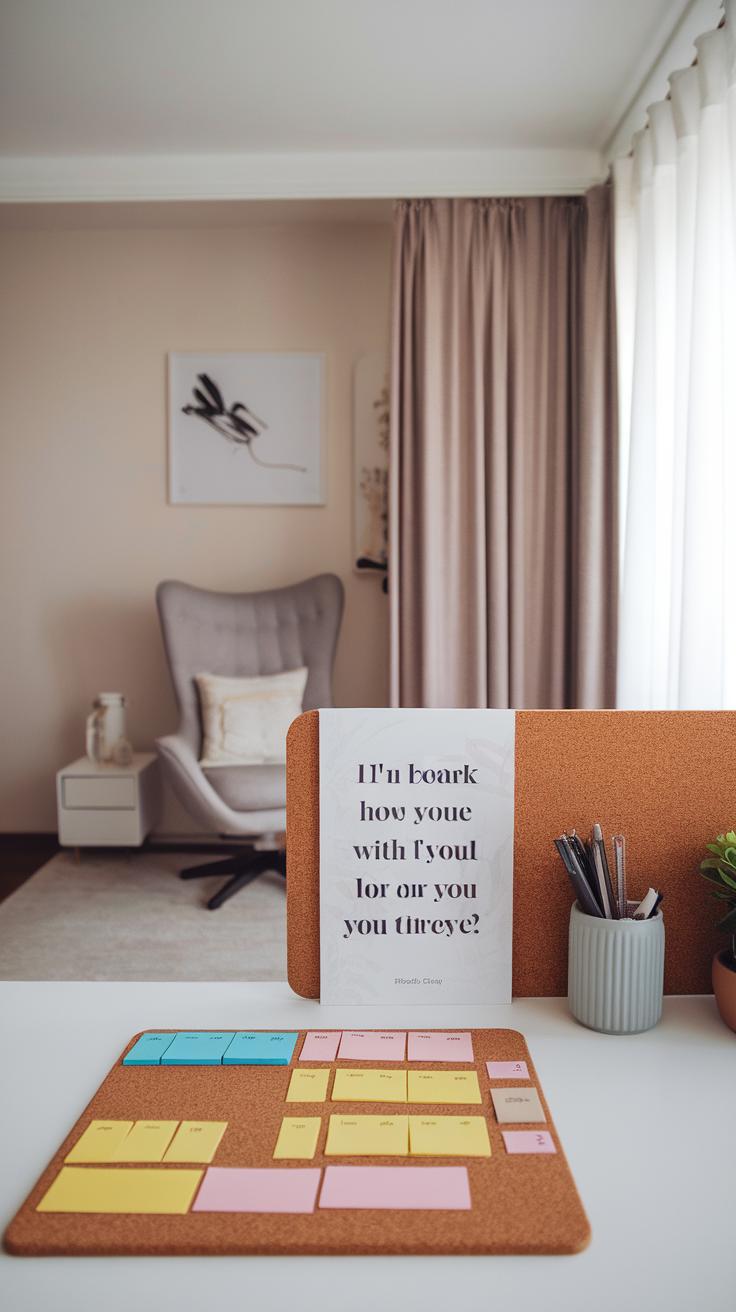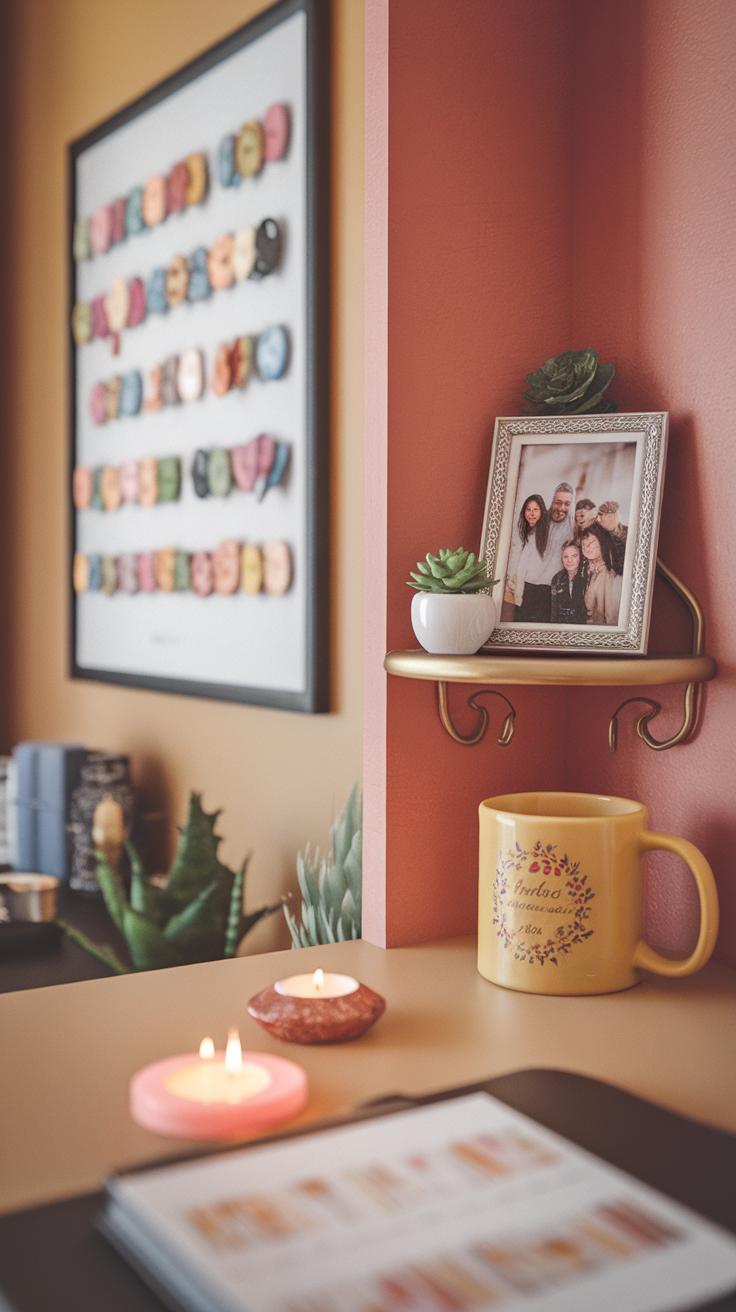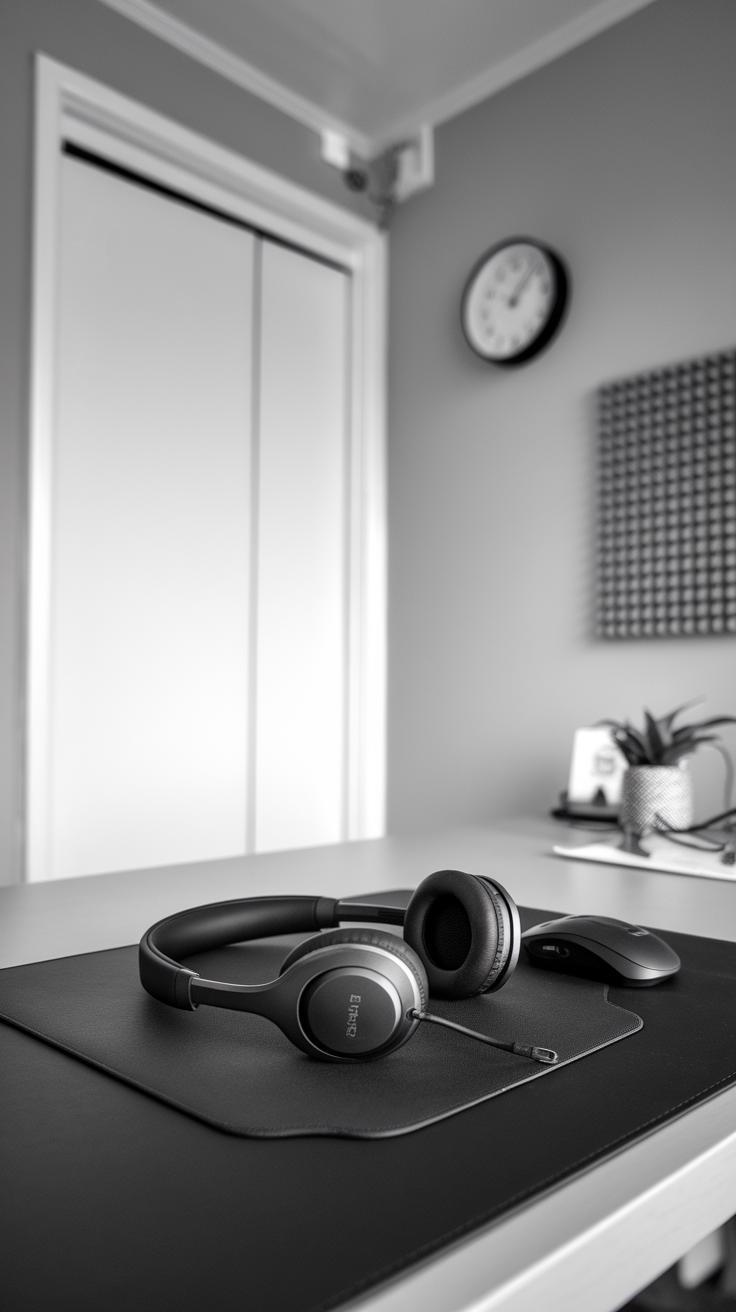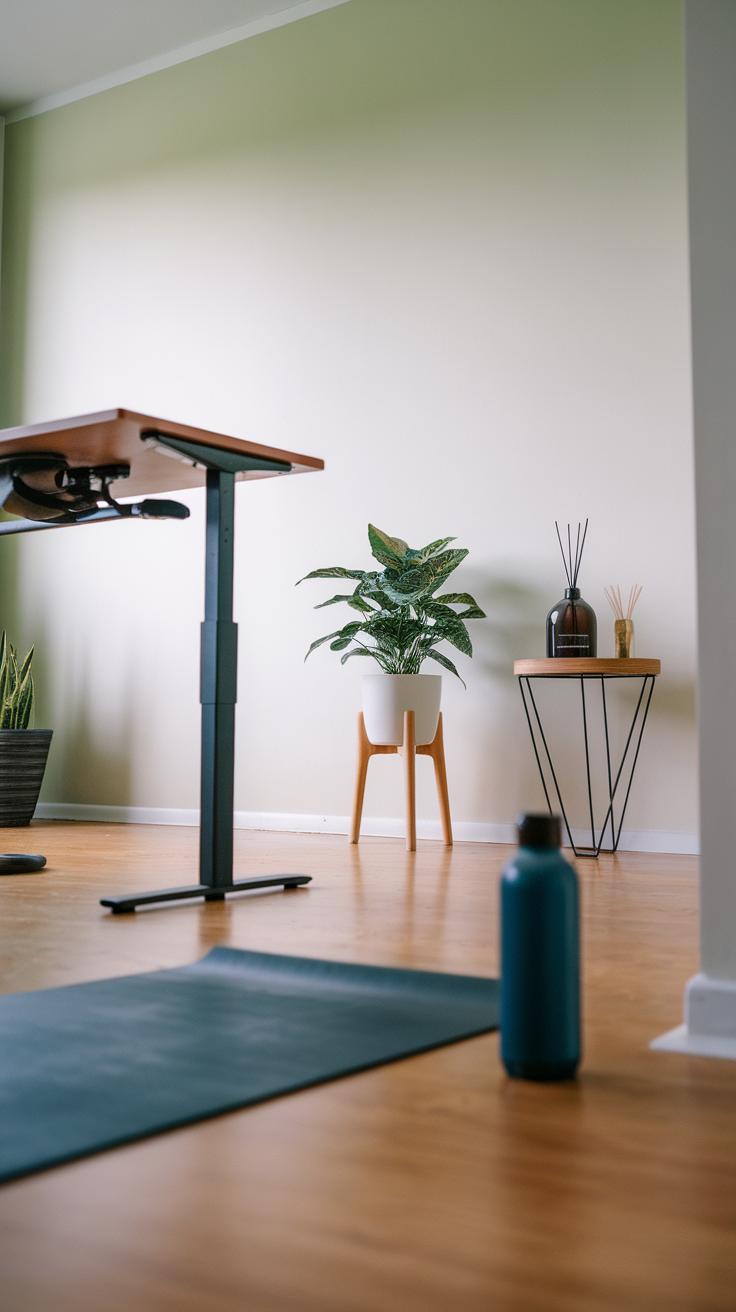Introduction
Working from home has become a major part of many people’s lives. Setting up an effective home office can help you stay focused and get more done in less time. It is easy to underestimate how much your workspace affects your daily tasks. This article looks at practical ways to create a work from home office that boosts productivity. You will find clear steps you can take to improve your work area and habits.
A home office is more than just a desk and chair. It is a dedicated space that supports your work style and keeps distractions away. This article explores design tips, ergonomic choices, technology tools, and organization methods that help you work better at home. By the end, you will know how to build an office that fits your needs and helps you reach your professional goals. What changes can you make today to improve your work environment?
Choosing the Right Location in Your Home
Finding the right spot for your home office can change how well you work. Pick a place that offers space to move and organize your work materials. A corner in a quiet room often works better than a busy area near the kitchen or living room. Ask yourself: Can you close a door or have some separation from distractions? Privacy affects your ability to focus deeply.
Consider how much natural light the area receives. Sunlight not only lifts your mood but helps keep you alert. If your chosen spot feels dim, it may drain your energy faster. Think about the noise level around this place. Is it near a noisy street or a loud appliance? High noise can break your concentration and slow down your work.
Comfort plays a role here too. You want a space that feels inviting and supports good posture and movement. Adjusting room layout to fit your daily tasks encourages productivity. Could rearranging furniture give you better access to light or more quiet? Remember, the location you select sets the foundation for how well you perform.
Privacy and Noise Control
Privacy prevents interruptions and lets your thoughts flow uninterrupted. Noise from family, neighbors, or street traffic can pull your attention away. A home office behind a closed door reduces external distractions.
Use thick rugs and heavy curtains to absorb sound. These materials soften echoes and cuts noise from outside. If you cannot install these, try placing bookshelves or plants against walls to buffer sound waves. Noise-cancelling headphones offer quick relief when sounds sneak in.
Think about when you work best. Are mornings noisy but afternoons quieter? Pick your spot accordingly. Creating a space that feels private helps your brain settle into work mode. Ask yourself: How often do you get distracted by noises, and what small changes could silence them?
Access to Natural Light and Ventilation
Natural light boosts your energy and eases eye strain. Working by a window connects you to the outside world and keeps you awake. Fresh air improves breathing and reduces headaches from stale indoor air.
Set your desk near a window to soak in as much daylight as possible. Rearrange furniture so sunlight falls on your workspace without causing screen glare. Open windows regularly to let fresh air circulate and prevent stuffiness.
You might add plants to improve air quality and increase comfort. If windows are limited, use daylight bulbs that mimic sunlight. Consider how airflow affects temperature in your room throughout the day. Adjusting blinds or curtains helps you control light levels while maintaining ventilation.
Selecting Ergonomic Furniture
Your home office furniture plays a key role in how well you work. Using ergonomic furniture helps you avoid pain and injury by supporting your body properly. When you choose desks, chairs, and accessories, focus on how they help keep your posture natural and reduce strain on muscles and joints.
Look for pieces that adjust to your body and your work style instead of forcing you to adjust to them. For example, a chair that lets you change height and angle improves comfort and focus. A desk that fits your height and allows you to arrange your equipment easily prevents slouching.
Have you ever noticed discomfort after hours of work? It often comes from furniture that doesn’t support your body. Investing in ergonomic furniture can reduce this discomfort, helping you work longer with better focus and quality. Think about your daily habits and pick furniture that fits those needs.
Ergonomic Chairs for Back Support
Your chair should support your spine all day long. Look for one with adjustable height so your feet rest flat on the floor, keeping knees at a 90-degree angle. Proper height helps reduce pressure on your lower back.
Lumbar support is crucial. It fills the gap between your lower spine and the chair, maintaining the natural inward curve of your back. Without this support, your back can tire quickly, causing pain and distraction.
Find chairs with enough padding to keep you comfortable but firm enough to support your posture. Adjustable armrests help keep your shoulders relaxed. When you sit correctly, you can work without distractions from discomfort. What does your current chair do for your back?
Appropriate Desk Height and Surface
The height of your desk affects how you sit and move. If it’s too high, your shoulders rise and tense. If it’s too low, you may slouch or lean forward. A desk that fits your height helps maintain a straight back and relaxed shoulders.
Standard desks are often about 29 to 30 inches tall. However, if you’re shorter or taller, an adjustable desk or one with customizable height is better. Standing desks also give the option to switch positions, reducing strain from sitting too long.
Choose a desk with enough clear surface for your keyboard, mouse, and other tools. You need room to keep your arms close to your body and wrists straight. How does your desk affect how you sit and work? Adjusting height may improve focus and reduce pain.
Organizing Your Workspace Efficiently
Decluttering for Better Focus
What’s on your desk right now? If it holds too many items, your focus likely suffers. Clearing unnecessary things from your workspace sharpens concentration and helps you stay on task longer.
Look around and remove anything that doesn’t support your daily work. Keep only essential tools like your computer, notepad, and pen. Store away extra items to avoid distractions.
Try the “one in, one out” rule: for every new item you bring in, put something else away or toss it. This habit prevents clutter buildup. Organize paperwork by urgency or project, so you don’t waste time searching.
Have you noticed how an empty desk feels less stressful? That feeling often leads to better productivity. A clean space invites a clear mind.
Storage Solutions and Cable Management
Use drawers and shelves to keep supplies out of sight but within reach. Assign spots for items like chargers, folders, and stationery. Drawer dividers can help separate categories and avoid mixing things up.
Cable clutter causes visual and mental distractions. Use cable clips or sleeves to bundle cords along the edges of your desk. Label cables to identify them quickly. Velcro straps or twist ties make it easier to add or remove devices without tangling.
Consider installing a power strip under your desk to keep plugs off the floor. This setup reduces hazards and creates a cleaner look.
When you control cable chaos, you reduce frustration and save seconds each day that add up to more work done.
Utilizing Technology for Productivity
Essential Devices for Efficient Work
Your home office needs technology that keeps work moving smoothly. A reliable high-speed internet connection tops the list. It prevents interruptions during video calls and quickens data uploads. A good quality monitor helps reduce eye strain and gives more screen space to handle multiple tasks. Consider dual monitors if your work requires switching between documents or apps often.
A responsive keyboard and ergonomic mouse support comfort for long hours of typing and navigating. Noise-canceling headphones help block distractions and improve focus during calls or deep work. A printer or scanner comes in handy when dealing with paperwork. Each device plays a specific role to support your daily tasks and maintain steady progress.
Software and Apps to Stay Organized
Software tools can keep your work on track and make communication clear. Task managers like Todoist or Trello organize your to-do lists and deadlines. They help break down large projects into manageable steps. For team collaboration, apps such as Slack or Microsoft Teams streamline messaging and file sharing.
Focus apps like Forest or Freedom limit distractions by blocking social media or other sites during work sessions. Calendar tools like Google Calendar help you schedule meetings and set reminders to stay punctual. Choosing the right apps can make your workflow smooth and keep you accountable throughout the day.
Lighting Your Home Office
Your work from home office needs the right mix of light to keep your focus sharp and reduce eye strain. Three types of lighting matter here: ambient, task, and natural. Ambient lighting fills the whole room with gentle light. It prevents sharp shadows and keeps your environment even and calm. Task lighting shines directly on your work area, like a desk lamp aimed at your keyboard or papers. This helps you see details clearly without squinting. Natural light comes from windows and is great for alertness, but it can cause glare or shadows if not balanced properly.
When setting up your lighting, think about how all three types work together. Too much artificial light can tire your eyes, while too much direct sunlight causes glare. Mixing these lights helps maintain a comfortable environment for long work hours. Could your current setup be missing a key light source that holds your attention and cuts fatigue?
Combining Natural and Artificial Light
Many people start their workdays with natural light streaming in. Use this advantage by placing your desk near a window, but avoid facing it directly to stop glare on screens. Natural light boosts mood and energy, especially in the morning.
As daylight changes or fades, switch on artificial lights. Use warm-toned bulbs to keep a cozy mood or cooler ones when you need to stay alert. You can control brightness with dimmer switches or adjustable lamps to match the time of day. This balance reduces sudden shifts between too bright or too dark. Have you arranged your workspace so light adjusts smoothly as the day moves on?
Choosing the Right Light Fixtures
Pick light fixtures that offer steady brightness without harsh glares. For overhead lighting, LED panels or diffused ceiling lamps spread light evenly across the room. Avoid direct, bare bulbs that create strong contrasts or reflections on your screen.
Desk lamps with flexible necks let you focus light where it’s needed most. Look for shades that soften the beam rather than focusing a harsh spotlight. Some lamps offer adjustable color temperatures so you can match lighting to your work type or time of day.
Choosing fixtures that minimize eye strain can make long work sessions easier. Have you tested different lamps to see which light feels best for your eyes and helps you stay productive?
Creating a Work Routine and Space Boundaries
You need clear routines and space rules to keep work from creeping into your personal life. Without them, stress grows and focus weakens. Setting dedicated work hours helps you switch on your productivity and turn it off when the day ends.
Decide when your workday starts and stops. Stick to these times like appointments you can’t miss. This helps your mind prepare to focus during work and relax afterward. Establish small rituals, like starting with a quick task or ending with organizing your desk, to mark these transitions.
Physical boundaries in your home communicate when you are ready to work. Use a specific spot only for work—this guides your brain to shift into focus mode and signals others to respect your work time. Avoid places tied to relaxation and family time to keep work from blending into your home life.
Setting Clear Work Hours
Define your work start and end times every day. This creates a steady rhythm that trains your brain to expect focused periods. Try splitting your day into blocks where you work on specific tasks, then take breaks.
Breaks prevent burnout and keep your energy steady. Use techniques like the Pomodoro method—work for 25 minutes, then rest for 5. During breaks, move around, stretch, or grab water. Ask yourself: When did I last take a real break?
Set boundaries with those at home by sharing your schedule. This reduces distractions and helps you keep work and rest separate. Your brain will thank you when it’s clear when work ends.
Designating Work Areas to Avoid Distractions
Create a workspace just for work. Choose a quiet, well-lit corner that feels different from your living or sleeping areas. When you sit there, your brain knows it’s time to focus.
Keep work tools, like your computer and notes, in this area only. Avoid working in places like the couch or bed, which signal relaxation. Having a clear physical boundary helps you avoid mixing work with leisure.
Inform family or housemates about your work zone and hours. This helps minimize interruptions. When others see you in your space, they know you’re in “work mode.” How can your workspace send a clear message about your focus?
Incorporating Personal Touches to Boost Motivation
Your home office should feel comfortable and inspiring. Adding personal items can help with that. Photos of family or friends remind you of support and good memories. Artwork you enjoy can spark creativity when work feels routine. Small keepsakes or souvenirs can serve as motivation and reduce stress. These items create a sense of belonging and make the space uniquely yours.
When you include personal touches, your workspace becomes more inviting. This can help you focus better and stay motivated on tough tasks. How do you decide which items to keep on your desk? Choose things that make you feel positive without overwhelming your environment. A few meaningful pieces have more impact than a cluttered space with many objects.
Customizing your space thoughtfully can turn work hours into productive, pleasant time. What personal object could inspire your best work? Try adding that and notice the difference in your daily routine.
Decorating with Meaningful Items
Too many decorations can create distractions. Instead, pick a few personal items that add value to your workspace. For example, one photo frame, a favorite mug, or a piece of artwork that reflects your personality. This keeps your desk tidy and focused.
Organize these items so they don’t compete with your work tools. Use shelves or small display areas to keep the desk surface clear. Rotating items occasionally can keep the space fresh without adding clutter. Consider a vision board or a bulletin board for inspirational quotes or goals.
Ask yourself: Does this item help me feel calm or motivated? If not, it might belong somewhere else. Simple personalization keeps your workspace purposeful and neat.
Benefits of Adding Plants
Plants improve the air quality by producing oxygen and reducing toxins. This creates a healthier environment, making it easier to breathe and stay alert. Studies show that having plants nearby can reduce stress levels and increase focus. When you feel calm, your productivity improves.
Choose plants that need little maintenance, like succulents or snake plants, so caring for them doesn’t become a distraction. Place a plant within your line of sight to enjoy these benefits throughout your workday.
Do you notice a boost in mood when you spend time around greenery? Adding plants can make your home office more inviting and support your work performance naturally. Try it and see how small changes affect your daily energy.
Managing Distractions When Working from Home
Distractions at home can easily break your focus. Family members may need your attention. Pets might demand playtime. Outside noise, like traffic or neighbors, can interrupt your flow. These distractions reduce your ability to work efficiently and lower your work quality.
Using noise-canceling headphones can help you stay in the zone. They block out sounds that pull your mind away from tasks. White noise machines create a consistent sound background that covers sudden noises. Apps that play calming sounds or instrumental music can serve the same purpose.
Setting clear rules with people in your home protects your work time. Talk honestly about your schedule and when you need quiet. Use signals like closed doors or a “do not disturb” sign to remind others. Respectful communication helps stop interruptions before they start.
What distractions bother you the most? How can you change your environment to guard your time better? Small changes in how you manage noise and talk with those around you improve your focus dramatically.
Techniques to Block Out Noise
Noise affects your concentration. Headphones designed to cancel sound remove background noise actively. Look for models with good reviews on noise reduction. Playing soft music or white noise can mask distractions you can’t control.
White noise machines create sounds like rain or a fan. These steady noises prevent sudden sounds from pulling your attention. Apps for phones or computers also offer these effects at low cost.
Try using earplugs if headphones are uncomfortable. Experiment with different sounds until you find what helps you focus best. Imagine how much work you could finish with fewer interruptions around you.
Communicating Boundaries with Others
Clear communication creates respect for your work time. Let family and housemates know your schedule. Explain which hours you cannot be disturbed. This helps avoid awkward interruptions and frustration.
Use simple phrases like “I’m working now” or “Please don’t interrupt for the next hour.” Setting visible signs, like a closed door or a note, reinforces the message without speaking.
Schedule breaks to spend time with those around you. This balances work and connection. When you explain why boundaries matter, people understand your need for focus better.
Have you talked with your household about your working hours? Setting boundaries changes how others treat your time and can boost your daily productivity.
Maintaining Health and Wellness While Working at Home
Working from home means spending long hours at your desk, which can cause stress and physical strain. Taking regular breaks helps your mind stay sharp and your body recover from sitting. Aim to stand up and move around every 30 to 60 minutes. Simple stretches or walking around your home reduces muscle tension and boosts blood flow. Try exercises that loosen your neck, shoulders, and back to avoid stiffness. Even short bursts of activity, like jumping jacks or a quick walk outside, can improve focus and lower fatigue.
Pay attention to how your body feels to spot early signs of strain. Soreness, headaches, or numbness may indicate your workspace needs adjustment. Check your chair height, monitor position, and keyboard placement. Your feet should rest flat on the floor, and your screen should sit at eye level to prevent neck pain. Use ergonomic accessories like wrist supports or laptop stands to reduce pressure. Small changes can prevent long-term problems and keep you comfortable throughout your workday. How can you improve your setup today to protect your health and stay productive?
Taking Regular Breaks and Moving
Breaks are not just pauses; they recharge your energy. Plan to step away from your desk every hour for five to ten minutes. You can stretch your arms, rotate your wrists, or do neck rolls to relieve tension. Walking around the room or outside stimulates circulation and helps clear your mind. Simple exercises such as wall push-ups or seated leg lifts can activate muscles without needing extra space. Setting a timer reminds you to take these breaks consistently. How often do you move during your workday? Adding motion can reduce fatigue and improve your work quality.
Monitoring Ergonomic Health
Notice any pain or discomfort in your shoulders, back, or wrists? These signs show your workspace might not fit your body. Adjust your chair height so your knees are level or slightly lower than your hips. Keep your keyboard close and at elbow height to avoid reaching or bending your wrists. Position your monitor so the top is at or just below eye level to protect your neck. Ergonomic tools like a footrest or an adjustable chair can make a big difference. Regularly check how you sit and move to prevent strain. What changes can you make to your setup today to feel better?
Conclusions
Setting up a productive home office involves thoughtful choices about space, tools, and habits. You can create a workspace that suits your personal preferences and job demands. Small changes often make a big difference in how focused and efficient you feel. Look for ways to reduce distractions, boost comfort, and keep your office organized. What you decide to prioritize will shape your daily work experience.
Keep in mind that a great home office grows with you. Your needs may change over time, and your space should adapt. Regularly update your tools, reorganize your supplies, and adjust lighting or seating as needed. A well-designed home office supports your productivity and helps you enjoy working from home. What improvements will you introduce to your work area this week?

